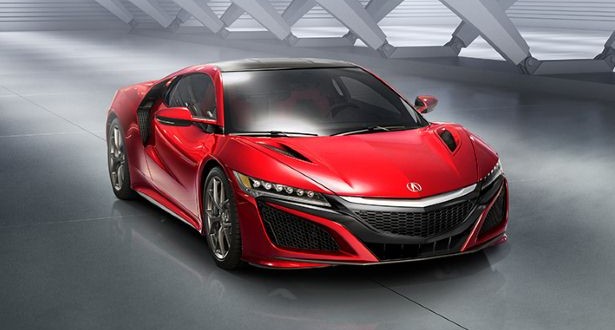The all-new Acura NSX is finally here and, to everyone but the crustiest of critics, this hybrid supercar will have been deemed well worth the wait. It’s been 25 years since the original NSX roared off into the sunset; from the moment this sad realization took hold, enthusiasts have been pestering the luxury division of Honda to restore the natural order of things.
Respecting these foundational concepts of the original NSX, the 2017 Acura NSX pursues an altogether new and revolutionary idea for Acura supercar performance, melding timeless sports car values with next-generation technologies to create a New Sports eXperience. And much like Acura’s Precision Crafted Performance DNA guided the creation of the original NSX, every aspect of this new NSX is a next-generation expression of those same values.
Based on the “man-machine synergy” approach that guides the development of all Acura vehicles, the company has created a driver-centered supercar where every part of the vehicle is respectful of the smartest part of the car—the driver.
Foremost among its many innovations is Sport Hybrid Super Handling All-Wheel-Drive (Sport Hybrid SH-AWD), a first-of-its-kind technology in the supercar realm. Marrying this cutting-edge and electrified new expression of Acura Super-Handling performance with new approaches to vehicle design—including advanced body construction, component packaging and aerodynamic optimization—results in a supercar that faithfully translates the acceleration, steering and braking inputs of the driver with incredible fidelity and virtually zero delay, thus amplifying the capabilities of every driver while greatly elevating the dynamic experience in every driving situation—qualities that define the New Sports eXperience.
Sport Hybrid SH-AWD utilizes its electric motors to assist acceleration, braking and cornering. With electrically-powered torque vectoring provided by the front-mounted Twin Motor Unit, the NSX takes Acura Super Handling All-Wheel Drive technology to a new dimension—using the dynamic, instantaneous and continuous distribution of electric motor torque to enhance handling precision and cornering performance in all driving situations.
The revolutionary NSX Sport Hybrid SH-AWD power unit and its advanced dynamic capabilities are supported by new concepts in supercar design and body construction. The NSX’s multi-material body/frame is a clean-sheet design, utilizing a multitude of materials and joining technologies, each chosen for its unique capability to deliver ultimate global and local body rigidity in combination with low mass, outstanding visibility and world-class occupant crash protection. The NSX’s multi-material body integrates several world-first technologies, including three-dimensionally bent and quenched ultra-high-strength steel A-pillars and ablation cast aluminum frame nodes.
NSX Cockpit
From the intuitive instrumentation and simple control layout to the careful application of materials and padding in the sports seats, steering wheel and center console, the NSX provides exceptional, driver-centric ergonomics that supports and clarifies the driving experience.
To develop an interior with exemplary ergonomics, the Acura design team utilized a number of test drivers with wide-ranging driving experience and skill sets to gather information to improve all aspects of driver feedback and support in the NSX.
Attractive as well as structurally rigid and lightweight, the seats in the new NSX are designed to offer superlative comfort and support, with the lateral and fore/aft support needed for a supercar. Developed through extensive testing and pressure mapping measurements, these seats offer more comfort than those in competing high-performance vehicles while providing the torso and thigh bolstering needed in a high-limit vehicle such as the NSX. Seat materials such as leather and Alcantara were carefully selected for the perfect combination of dynamic driving support and comfort, including ease of ingress-egress.
Likewise, the center console/controls have been designed to minimize distractions from the most important function—driving—ultimately serving as a “simple sports interface.”
Agencies/Canadajournal
 Canada Journal – News of the World Articles and videos to bring you the biggest Canadian news stories from across the country every day
Canada Journal – News of the World Articles and videos to bring you the biggest Canadian news stories from across the country every day



